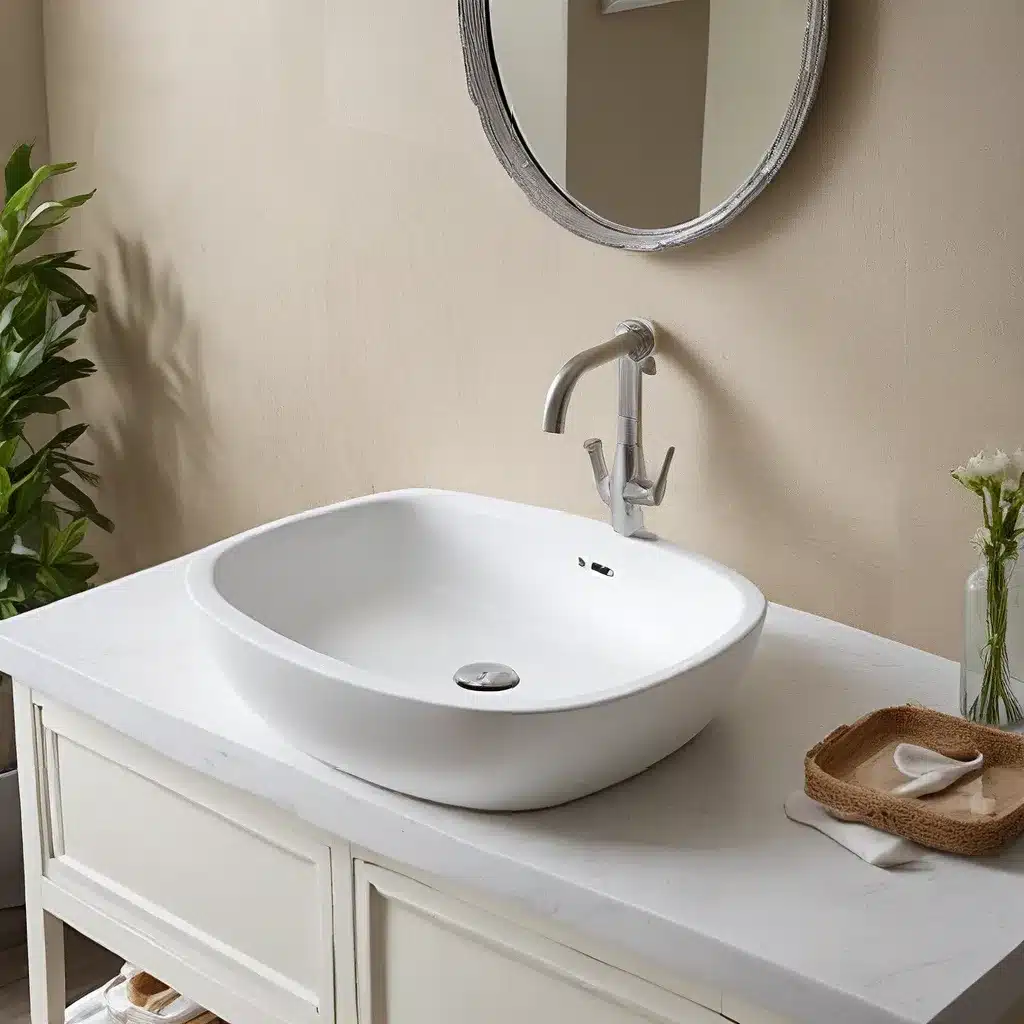
As homeowners and eco-conscious consumers, we all strive to make our living spaces more environmentally friendly. The bathroom, often overlooked in the quest for sustainability, holds immense potential to reduce our carbon footprint and save valuable resources. One of the most impactful upgrades you can make? Investing in a sustainable washbasin or sink.
The Importance of Eco-Friendly Bathroom Fixtures
The bathroom is a hub of water and energy consumption, making it a prime target for eco-friendly improvements. From the water-guzzling shower to the electricity-hungry lighting, small changes in this space can have a significant ripple effect on your overall household sustainability.
Consider this: the average person spends approximately 30 minutes per day in the bathroom, adding up to over 182 hours per year. With each visit, the faucet, showerhead, and other fixtures are responsible for a substantial portion of your home’s water usage. By upgrading to water-efficient alternatives, you can dramatically reduce your environmental impact and lower your utility bills.
Additionally, the materials used in bathroom fixtures, such as sinks and vanities, play a crucial role in your home’s carbon footprint. Sustainable options like copper, fireclay, and reclaimed wood not only look beautiful but also minimize the environmental toll of manufacturing and disposal.
Navigating the Sustainable Sink Landscape
With the growing demand for eco-friendly bathroom solutions, the market has responded with an array of sustainable sink options. From sleek and modern to rustic and charming, there’s a sink to suit every design aesthetic.
Copper Sinks:
Copper has long been revered for its timeless beauty and exceptional durability, but did you know it’s also an environmentally conscious choice? Copper is a naturally occurring element that can be infinitely recycled without losing its properties. Copper sinks are not only visually stunning, but they also contribute to a more sustainable home.
Fireclay Sinks:
Crafted from a blend of natural clay and other minerals, fireclay sinks are a durable and eco-friendly alternative to traditional porcelain. The manufacturing process for fireclay is less energy-intensive, and the material is highly resistant to chipping, scratching, and staining, ensuring a long lifespan.
Reclaimed Wood Vanities:
For a rustic-chic aesthetic that aligns with sustainability, consider a reclaimed wood vanity. These vanities are crafted from repurposed timber, reducing the demand for virgin materials and diverting waste from landfills. The unique character and imperfections of reclaimed wood add charm and individuality to your bathroom.
Installation Considerations for Sustainable Sinks
Upgrading to a sustainable sink is an impactful step, but proper installation is crucial to maximize its benefits. Whether you’re a seasoned DIYer or prefer to work with a professional, there are several factors to keep in mind.
Plumbing Compatibility:
Ensure that your new sink is compatible with your existing plumbing system. Measure the space, check the drain size, and determine if any adjustments or adaptations are needed. Working with a licensed plumber can help ensure a smooth and efficient installation process.
Water Efficiency:
When selecting a sustainable sink, pay close attention to the water flow rate. Look for WaterSense-labeled faucets and showerheads that meet strict water-saving standards, typically under 1.5 gallons per minute (GPM) for faucets and 2.0 GPM for showerheads.
Maintenance and Durability:
Sustainable sinks, such as copper and fireclay, require minimal maintenance and offer exceptional durability. However, it’s essential to follow the manufacturer’s recommendations for cleaning and care to preserve the material’s integrity and aesthetic.
Maximizing the Benefits of Sustainable Sinks
By investing in a sustainable sink, you’re not only enhancing the visual appeal of your bathroom but also contributing to a greener, more eco-friendly home. To fully realize the benefits, consider these additional upgrades and lifestyle changes:
LED Lighting:
Replace your existing light bulbs with energy-efficient LED alternatives. LED bulbs consume up to 80% less energy than traditional incandescent bulbs and last significantly longer, reducing your environmental impact and utility costs.
Water-Efficient Fixtures:
Pair your sustainable sink with other water-saving bathroom fixtures, such as low-flow toilets and showerheads. Look for the WaterSense label to ensure maximum water efficiency.
Sustainable Cleaning Products:
Opt for natural, plant-based cleaning products that are free from harsh chemicals and gentle on the environment. These products not only contribute to a greener home but also minimize the impact on your personal health.
Mindful Water Usage:
Develop water-conscious habits, such as turning off the faucet while brushing your teeth or taking shorter showers. Small changes in your daily routine can have a profound effect on your overall water consumption.
By embracing sustainable sink solutions and incorporating complementary eco-friendly upgrades, you can transform your bathroom into a haven of environmental responsibility. Not only will you enjoy the aesthetic and functional benefits of your new sink, but you’ll also take pride in knowing that you’re making a positive impact on the planet.
Explore the wide selection of copper, fireclay, and reclaimed wood sinks available at Washbasin Factory and start your journey towards a greener, more sustainable home.

